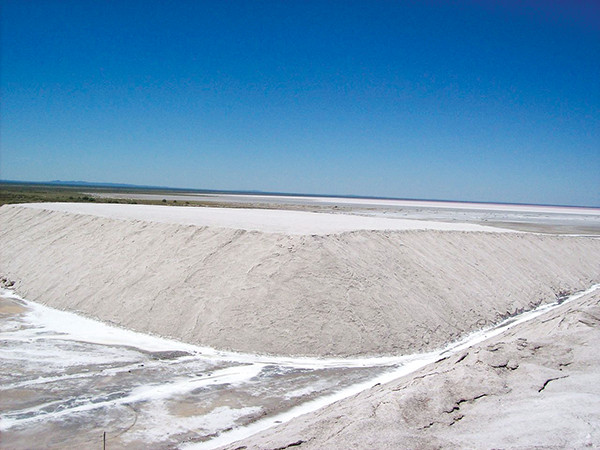
by U.S. Geological Survey Wednesday, June 13, 2018
Brian W. Jaskula, a mineral commodity specialist for the U.S. Geological Survey, compiled the following information on lithium, which is used in batteries and many other applications.
Lithium, the lightest of all metallic elements, has unique properties that have led to its use in a diverse array of applications. For many years, most lithium was used in the production of ceramics, glass and aluminum. More recently, the market for lithium has shifted toward batteries for consumer electronics and electric vehicles.

©Dario Alpern, Creative Commons Attribution-ShareAlike 3.0 Unported
Lithium is useful in energy storage because of its very high electrochemical potential. A typical lithium-ion battery cell can generate roughly 3.6 volts, compared with 1.5 volts for lead-acid or zinc cells of similar size.
Lithium’s low atomic mass enables lithium-ion batteries to have high charge-to-weight and power-to-weight ratios. Commercial lithium-ion battery cells typically use lithium cobalt dioxide or a lithium manganese compound as the cathode.
Lithium’s low coefficient of thermal expansion and high specific heat capacity allow it to retain its volume across a wide range of temperatures and to absorb heat with minimal change to its temperature. Therefore, it is often used in heat-transfer applications such as high-temperature lubricants, as well as in the production of ceramics, glass, aluminum and enamels.
Lithium is also used in the production of lubricating greases, synthetic rubbers and plastics, metallurgical powders, pharmaceuticals, and air conditioning and dehumidification systems.
Currently, lithium is produced from two types of deposits: brine and pegmatite. Commercial brine extraction operations are located in Argentina, Chile, China and the United States, whereas pegmatite mining operations are located in Australia, Brazil, China, Portugal and Zimbabwe.
Lithium is typically sold as mineral concentrates, such as spodumene and petalite; as compounds, such as lithium carbonate and lithium hydroxide; and as a pure metal.
Relatively few companies produce lithium, but owing to anticipated demand for lithium from hybrid/electric vehicles and grid storage applications, mineral exploration efforts over the last several years have identified a number of deposits around the world that are in various stages of development. Identified lithium resources total 5.5 million metric tons in the United States and approximately 34 million metric tons in other countries. About 35 percent of the lithium consumed worldwide in 2012 was used for ceramics and glass production, 29 percent for batteries, 9 percent for greases, 6 percent for metallurgical powders, 5 percent each for polymers and air treatment, 1 percent for aluminum and 10 percent for other end uses.
For more information on lithium, visit http://minerals.usgs.gov/minerals.
Lithium production and consumption:
World lithium production (excluding U.S. production) was estimated to be 36,900 metric tons of lithium contained in minerals and compounds in 2012. Lithium production has increased by 500 percent since 1992.
Chile was the leading brine-based lithium producer and Australia the leading producer of lithium from hard rock deposits in 2012.
Worldwide consumption was estimated to be 28,200 metric tons of lithium contained in minerals and compounds in 2012.
Worldwide consumption growth averaged 6.4 percent per year between 2000 and 2012.
Fun facts:
Lithium was discovered by Johan August Arfwedson in 1817 as a constituent of petalite ore. The name derives from the Greek “lithos,” meaning “stone.”
Lithium has two stable isotopes, lithium-6 and lithium-7, and is believed to have been among the first three elements (together with hydrogen and helium) synthesized during the Big Bang.
Aerospace engineers at NASA and the University of Alabama in Huntsville are developing a fusion impulse propulsion spacecraft powered by “dilithium crystals” that could reduce a six-month trip from Earth to Mars to three months. The fusion fuel is a combination of deuterium and lithium-6 in a crystal structure.
Approximately 0.4 grams of lithium are contained in a smartphone battery, 7 grams in a laptop battery, 75 grams in an electric scooter battery, and 2,300 grams in a plug-in hybrid vehicle battery.
© 2008-2021. All rights reserved. Any copying, redistribution or retransmission of any of the contents of this service without the expressed written permission of the American Geosciences Institute is expressly prohibited. Click here for all copyright requests.